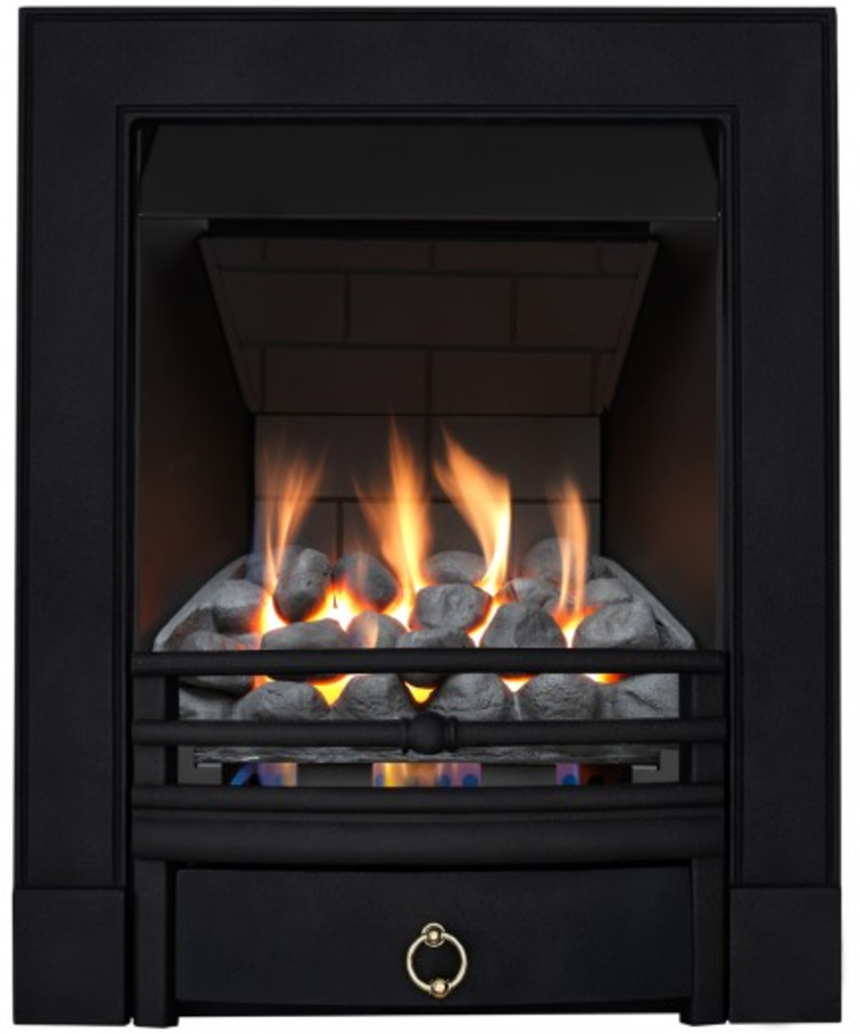Choosing to invest in a gas fire is a wise choice for a wide range of reasons, from the aesthetic element to the cost-effective running of these heating devices. Our latest guide will help you to find the perfect gas fire to meet your individual home requirements.

Gas fires offer a perfect alternative to traditional wood burning fires or electric fires with a real flame effect but no need for solid fuels. They are easy to maintain, install and efficient to run, therefore making for a perfect option.
How do gas fires work?
The process in which gas fires operate is known as combustion, this involves natural gas and oxygen being ignited. This then creates both heat and light that will, in turn, heat your home. It is important for gas fires to be installed by a registered gas installer to ensure that the fire is safe to use. Then real flame effect offers a realistic alternative to wood burning fires and means that there is a low level of maintenance needed.
What are the benefits of a gas fire?
- They can be switched on and off instantly
- The operation is silent as there is no fan projecting the heat around the room
- The heat settings can be turned up and down to suit the weather
- They are low maintenance and need little cleaning
- Their durability means that they have a long life
What styles of gas fires are there?
There are a wide variety of gas fires available; the one that you pick however will likely depend on the requirements within your home. Below are the main styles available:
Flueless Gas Fires
Flueless gas fires are simply those that do not require a flue or chimney to be installed. For this reason, flueless gas fires are usually cheaper and quicker to install as they can simply be fixed onto a flat wall. The catalytic technology within the fires converts the poisonous carbon monoxide fumes, which are a by-product of the fire into harmless carbon dioxide and water vapour, making them safe to use without a flue. Flueless options can be either wall-mounted gas fires or inset so offer versatility within the home.
Conventional Flue Gas Fires
The conventional flue gas fires are suitable for homes that have a chimney or flue that likely once housed a wood or coal burning fire. These are usually open fronted, offering all of the benefits of a traditional fire without the hassle. Some of them do come with a discrete glass panel, which can help to decrease the amount of heat lost through the chimney. Conventional flued gas fires are only available in an inset option due to their need for a chimney or fire.
LPG Gas Fires
LPG gas fires are perfect for homes without a mains gas supply; they instead are fuelled by liquefied petroleum gas. These fires are again flueless, using catalytic technology as mentioned above, so are suitable for homes without a chimney and can be fitted in almost any room. LPG gas fires are available in wall-mounted styles, meaning that they are quick and simple to install!
What types of fuel beds are there?
You’ll often be able to choose the type of fuel bed that is within your gas fire, and this will usually be moulded coals, logs, loose pebbles or fuel-less.
Moulded coals/logs
Coal and log beds are the most classic style, as this replicates the look of a traditional wood burner and can give a wonderfully realistic look. These offer differing warming glows that will add a certain ambience to your evenings.
Pebble bed
For a more modern take, the pebble bed is a popular option. These are simply natural pebbles that are placed into the fire for a beautiful and purely aesthetic effect.
Health and safety
When dealing with gas fires it is important to know the signs to look out for and to have suitable health and safety measures in place. Although we would hope that nothing goes wrong, you should certainly be prepared and clued up just incase anything ever did happen. A carbon monoxide alarm should be fitted in your home, in the same room as your gas fire. Ensure that your gas fire is serviced regularly; this is normally recommended to be done at least once a year. If any signs of carbon monoxide appear such as usually blue flames burning orange or yellow, condensation forming on windows and cool surfaces and sooty stains appearing on surfaces near the fire, open all the windows and doors, turn off all appliances and evacuate the building. If properly serviced and maintained, it is highly unlikely that any problems will occur and you will be free to enjoy the cosy warmth offered by a gas fire!
Do not hesitate to get in touch with us if you have any other questions on gas or electric fires, as we will be happy to help!
